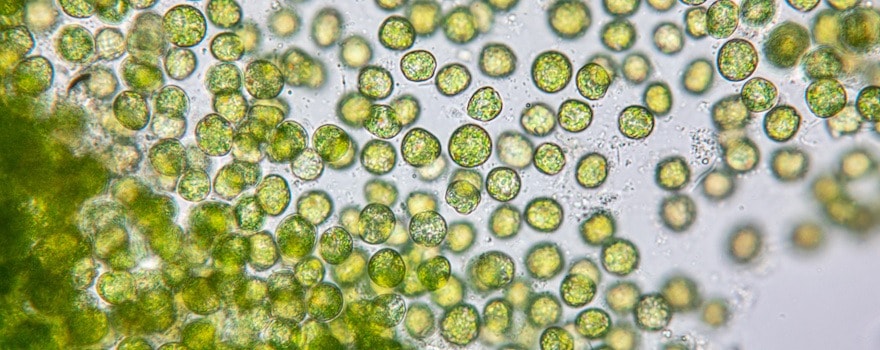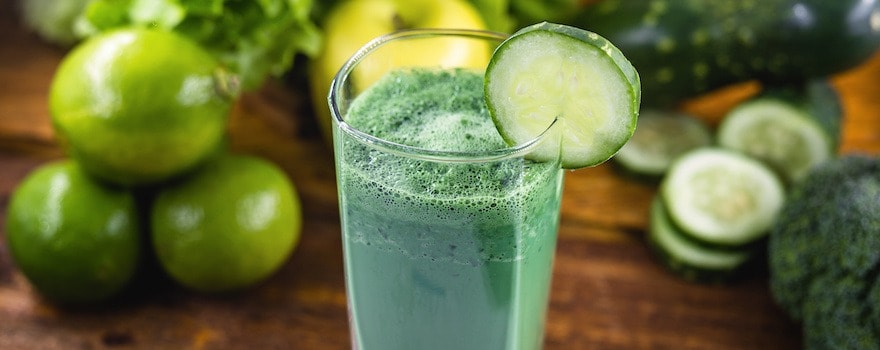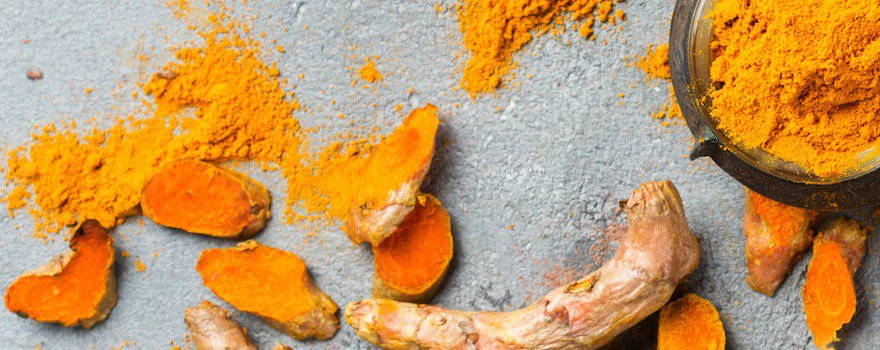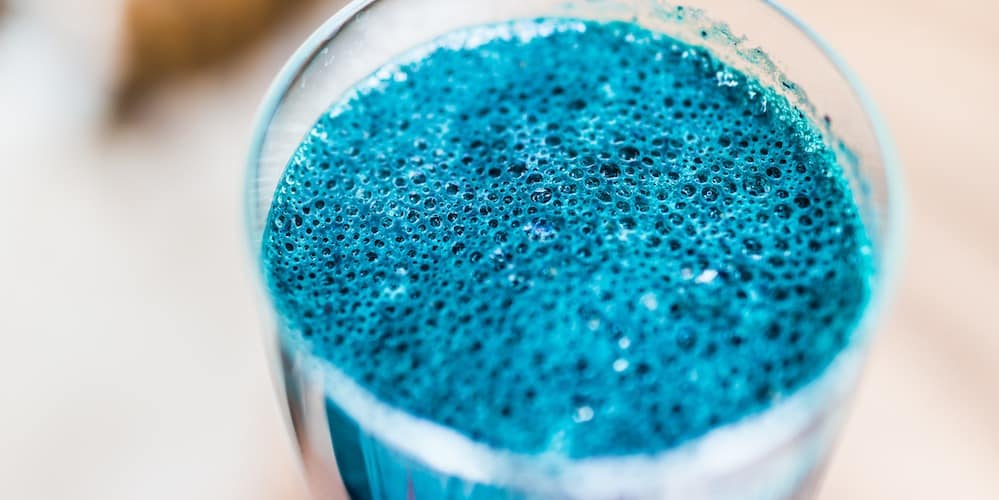VALIDATION SCIENTIFIQUE
Laure Fourchaud – 24.11.2021
Dr en physiologie de la nutrition
BENEFITS OF CHLORELLA
✓ Detoxifying
✓ Stimulates and regulates the immune system
✓ Powerful antioxidant protecting against oxidative stress
✓ Potentially anti-cancer
✓ Anti-fatigue and improves depressive states
What is chlorella?
Behind the name chlorella (Chlorella vulgaris) lies a most astonishing microalga. Also called chlorelle, it derives its name from the Greek “chloros” (meaning “green”) and the Latin suffix “ella” (meaning small).
Originating from Southeast Asia, it is one of the oldest living organisms. Due to its great resistance and incredible capacity for reproduction and regeneration, chlorella has managed to survive through the ages to reach us. It belongs to the Chlorellaceae family, which includes several species of chlorella. Today, three main species are distinguished: Chlorella lobophora, Chlorella sorokiniana, and Chlorella vulgaris, the most cultivated.
It takes the form of a microscopic alga that includes only a single nucleus and whose size is similar to that of a red blood cell (approximately 5 µm). It thrives in both fresh and saltwater. In its natural habitat, chlorella lives symbiotically with certain freshwater species such as paramecium, a unicellular organism.

Chlorella is considered a chlorophyte alga (or green alga) due to its deep green color, which it owes to its high chlorophyll concentration. Chlorophyll is an assimilating pigment that allows chlorella to absorb light energy through the process of photosynthesis. Without roots or leaves, this is the only way for chlorella to grow and thrive in water. Discover another superfood rich in chlorophyll that we also love, matcha tea!
From a nutritional standpoint, chlorella is an exceptional microalga. Essential fatty acids, amino acids, proteins, vitamins, antioxidants… are all beneficial components for the body.
It is primarily known for its detoxifying action and its ability to absorb heavy metals from the body. However, as you will see, this is not its only beneficial effect. Chlorella has various properties that support the overall well-being of the body.
Today, chlorella is mainly consumed as a dietary supplement or in powder form. It is still the subject of many studies to better understand its effects on the body and discover previously unknown properties. This microalga could even become the fuel of tomorrow!
Nutritional composition
- Proteins
- 18 amino acids (including the 8 essentials)
- Essential fatty acids: omega 3, 6, and 9
- Vitamins: A, B6, B9, B12, C, E, K1
- Minerals and trace elements: potassium, calcium, magnesium, iron, manganese, zinc, copper…
- Antioxidant pigments: chlorophyll, carotenoids, lutein

The benefits of chlorella
💎 Detoxifying
If chlorella enjoys a great reputation today, it is primarily thanks to its detoxifying action. This microalga is highly effective in eliminating all waste from the body: heavy metals (mercury, lead, aluminum…), pesticides, dioxins, and other harmful substances. In addition to eliminating them, chlorella limits their accumulation in the body.
How does it work? Its cell wall contains sporopollenin. Behind this somewhat intimidating name lies a very resistant substance found in many plants. Once consumed through chlorella, sporopollenin binds to toxins and eliminates them through urine and feces. The detoxifying action of the algae is enhanced by that of chlorophyll, which purifies the blood and detoxifies the body.
This study published in the medical journal Drug and Chemical Toxicology examined the detoxifying action of chlorella on rats poisoned with chlordecone. The results showed that chlorella interrupted the circulation of the insecticide in the body before eliminating it in the feces.
🛡 Stimulates and regulates the immune system
The components present in chlorella have positive effects on the immune system. Its core notably contains the famous CGF (Chlorella Growth Factor), a unique complex made up of amino acids, vitamins, proteins, and nucleic acids.
This combination boosts immunity, especially in older adults, and promotes cell regeneration. The vitamin B12 contained in chlorella also contributes to the normal functioning of the immune system.
This study by the British Industrial Biological Research Association, conducted on lead-exposed rats, showed that chlorella facilitated the production of new healthy cells by the body.
😷 Powerful antioxidant protecting against oxidative stress
Chlorella also possesses powerful antioxidant properties that protect the body from diseases and infections. Its action is due to the fatty acids, vitamins C, E, carotenoids, and chlorophyll it contains. Chlorella is actually the plant richest in chlorophyll!
Chlorophyll is a naturally antioxidant pigment. It protects cells from free radicals and stimulates the production of immune cells (macrophages and leukocytes). The chlorophyll in chlorella contributes to the oxygenation and detoxification of the body while maintaining acid-base balance.
This study conducted by the Graduate School of East-West Medical Science in Korea on 52 smokers shows that chlorella limited the damage of free radicals on DNA.
🔬 Potentially anti-cancer
Like spirulina, chlorella is believed to have anti-tumor properties. Carotenoids, yellow-orange pigments, exhibit anti-cancer activity.
Chlorella also stimulates the release of interferons, proteins naturally produced by immune system cells. Interferons defend the body against viral, bacterial, parasitic, or tumor attacks.
Due to its antioxidant action, chlorella would also reduce cell damage caused by radiotherapy and chemotherapy.
This study by the Universiti Kebangsaan Malaysia, conducted on rats with liver cancer, shows that chlorella inhibited the proliferation of diseased cells and induced apoptosis, which is the self-destruction of cancer cells.
⚡️Anti-fatigue and improves depressive states
Rich in vitamins and minerals, chlorella supports the body daily, fights fatigue (including chronic) and exhaustion. It is also very interesting for relieving depressive states.
Indeed, chlorella contains tryptophan, an amino acid precursor of serotonin or “happiness hormone.” It also affects the release of melatonin to alleviate sleep disorders.
This study conducted by various Iranian and Australian universities, on patients with major depressive disorder, demonstrated the efficacy of chlorella in reducing anxiety and physical and cognitive symptoms of depression.
🍭 Regulates blood lipid and sugar levels
Chlorella shows promising effects for reducing bad cholesterol levels and blood glucose levels. This action seems to come from the phytosterols and fibers contained in chlorella.
As shown by this study from various Iranian universities conducted on 70 patients, chlorella improves insulin sensitivity and increases serum insulin production tasked with maintaining normal blood glucose levels.
🏃♂️ May aid in weight loss
Chlorella aids in weight loss thanks to its appetite-suppressing effect. It contains dietary fiber but most notably phenylalanine, an essential amino acid in the body that acts as an appetite suppressant. A few minutes after consuming chlorella, the feeling of satiety sets in and cravings for snacking disappear.
Chlorella is a great ally for people on a diet because, in addition to helping with weight loss, it helps to avoid deficiencies thanks to its exceptional composition.
How to consume chlorella?
Chlorella in tablets

Tablets or capsules are made from the powder of dried chlorella. It’s a form that’s easily found in stores. It offers several advantages: it is convenient, easy to take, and masks the algae taste of chlorella (if you find it unappealing!). However, chlorella in tablets tends to have a less interesting nutritional value.
One should especially inquire about the process of transformation (which must respect the active ingredients) and the content of pure chlorella.
Chlorella powder

Choosing chlorella powder is an interesting way to discover this micro-algae. You can cook with it (add it at the end of cooking). To not alter the active ingredients, chlorella powder should not be heated above 40°C.
You can also sprinkle it on a salad, mix it into a juice, or make a delicious banana/apple/coconut/chlorella smoothie. Or simply dissolve it in a large glass of water, or milk.
Fresh chlorella
Consuming fresh chlorella is the best way to enjoy its benefits. However, this form is still very uncommon. Only a few manufacturers offer fresh chlorella, most often in juice form.
Favor French chlorella
According to European standards, chlorella cannot be organic. However, it is advisable to choose chlorella from French cultivation.
Some chlorellas are produced in Asia and are much less traceable. As the algae can absorb heavy metals and pollutants, it is important to ensure its origin and production location. It will also have less energy impact if it comes from France.
Choose a pure chlorella, guaranteed to be free of heavy metals and pesticides. Ideally, it should be cultivated in pure water away from all pollution sources. There are many small French producers, a simple online search will help you find some near you!
Chlorella and spirulina
Chlorella and spirulina combine very well because their actions are complementary. Even better: they act synergistically, and one enhances the positive effects of the other. Taking them simultaneously is interesting to benefit from the nutrients of both.
Chlorella and spirulina form an excellent balance. Spirulina, for example, contains more iron. In contrast, chlorella has 4 times more chlorophyll than spirulina.
As demonstrated by this study, it also contains active and bioavailable forms of vitamin B12, which may be interesting for people with a vegan or vegetarian diet. However, be sure to choose a chlorella cultivated in natural light (in glass tubes). This is the only cultivation method that allows obtaining chlorella rich in vitamin B12. As a precautionary principle, we advise vegan individuals to take medical supplementation in vitamin B12.
Chlorella and turmeric

Turmeric (Curcuma longa) is a plant whose properties are similar to those of chlorella. An antioxidant, it is also detoxifying, anti-stress, anti-depressant, and potentially anti-cancer. Combine turmeric and chlorella for a seasonal detox cure.
Chlorella dosage
⚖️It is recommended to consume between 3 and 4 g of chlorella powder per day.
🚴🏻♀️In the context of intense sports practice, athletes can exceptionally take up to 10 g of chlorella per day.
👶For children, the recommended dosage is 1 g of chlorella per 20 kg.
We advise you to start with small doses before increasing the dosage gradually. Due to its powerful detoxifying action, chlorella stimulates the release of waste in the body. Some symptoms may then appear. That’s why it’s important to adjust the intake according to your body’s reactions.
⏳Chlorella is preferably consumed before meals. It can be taken daily, throughout the year, or in 3-month courses, twice a year.
💊In tablets: up to 8 per day for 500 mg tablets or capsules
🥄In powder: 3 to 4 g per day
Contraindications and side effects
Chlorella is a micro-algae well tolerated by the body. However, its consumption is not recommended for the following people:
- Due to the high iron content of chlorella, people with iron overload (hemochromatosis) should avoid consuming it.
- Rich in phenylalanine, one of the 8 essential amino acids, chlorella is not recommended for people with phenylketonuria (accumulation of phenylalanine in the body).
- People on anticoagulant therapy should not take chlorella as it contains vitamin K1 which plays a role in coagulation.
- Avoid consuming coffee at the same time as taking chlorella as it enhances the effects of caffeine.
Taking chlorella generally causes few side effects. However, the following symptoms may occur (especially at the beginning):
- Gastrointestinal disorders (bloating, diarrhea, etc.).
- Headaches.
- Breakouts.
If symptoms persist, it is advised to stop the consumption of chlorella and consult a doctor.
History, Culture, and Market of Chlorella
A bit of history
Chlorella has a long history. The first traces of its existence date back 2.5 billion years, in Asia and more specifically in Japan.
It was through the work of botanist and microbiologist M.W. Beijerinck in 1890 that chlorella was described for the first time. He even added his name to the scientific name of chlorella: Chlorella vulgaris Beijerinck.
In the Land of the Rising Sun, chlorella had its moment of glory after the Second World War. It then became an important food source for the Japanese population. It was even considered a ‘food of national interest’.
It was finally in the 1950s that its reputation grew. Thanks to research, it was discovered that this micro-algae is a good source of essential fatty acids and proteins. However, at that time, chlorella had a major drawback: it was very indigestible.
Japan created, in 1957, the institute for chlorella research to find the best way to exploit this algae. Abandoned for several years, chlorella made its big comeback in 1970. Researchers finally managed to remove the algae’s cell membrane. Made of cellulose, it was what made it indigestible.
Over time, research on chlorella has multiplied, allowing the discovery of its numerous properties.
Different Cultivation Methods
Chlorella can be cultivated in different ways:
- In shallow open-air basins: this method is used for 95% of the world’s production. However, it has the downside of not protecting the water, and thus the chlorella, from airborne pollutants.
- In fermenters (or heterotrophic reactors): inexpensive, this method does not produce chlorella with high nutritional value. Indeed, the algae is deprived of its natural photosynthesis process and only feeds on sugars present in the water.
- In glass tubes: this method is used for only 1% of the world’s chlorella production. And no wonder: it is 10 times more expensive for producers than cultivation in fermenters. Yet, it is the best method to obtain high-quality chlorella! The algae grows in glass tubes placed in the sun and with natural light while being protected from external pollutants.
Today, the island of Taiwan is the world’s leading producer of chlorella. Japan, China, India, and Indonesia are also among the main producing countries.
Dossier by Julia Perez and Charlotte Jean
Sources and Scientific Studies
Pore RS, 1984. Detoxification of chlordecone poisoned rats with chlorella and chlorella-derived sporopollenin.
Mary L S Queiroz, Michelle Rocha-Parise, Cristiane O Torello, Julia de Souza Queiroz, Claudia Bincoletto, Marcelo Antonio Morgano, Miriam R Romano, Edgar J Paredes-Gamero, Christiano M V Barbosa, Andrana K. Calgarotto, 2011. Chlorella vulgaris restores bone marrow cellularity and cytokine production in lead-exposed mice.
Lee SH, Kang HJ, Lee HJ, Kang MH, Park YK, 2010. Six-week supplementation with Chlorella has favorable impact on antioxidant status in Korean male smokers.
Emey Suhana Mohd Azamai, Suhaniza Sulaiman, Shafina Hanim Mohd Habib, Mee Lee Looi, Srijit Das, Nor Aini Abdul Hamid, Wan Zurinah Wan Ngah, et Yasmin Anum Mohd Yusof, 2009. Chlorella vulgaris triggers apoptosis in hepatocarcinogenesis-induced rats.
Yunes Panahia, Roghayeh Badelib, Gholam-Reza Karamic, Zeinab Badelid, Amirhossein Sahebkaref, 2014. A randomized controlled trial of 6-week Chlorella vulgaris supplementation in patients with major depressive disorder.
Mehrangiz Ebrahimi-Mameghania, Zahra Sadeghib, Mahdieh Abbasalizad Farhangic, Elnaz Vaghef-Mehrabanyd, Soodabeh Aliashrafid, 2016. Glucose homeostasis, insulin resistance and inflammatory biomarkers in patients with non-alcoholic fatty liver disease: Beneficial effects of supplementation with microalgae Chlorella vulgaris: A double-blind placebo-controlled randomized clinical trial.



